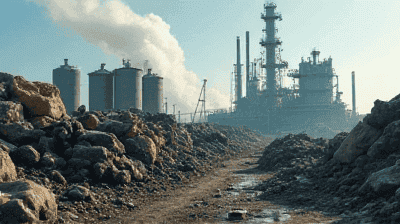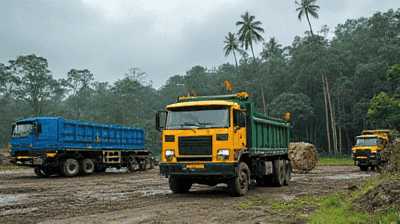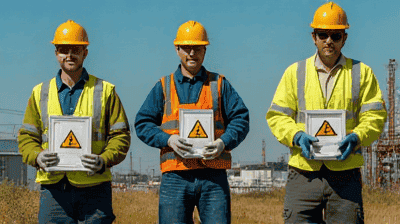
Industrial hazardous waste poses a significant environmental and health risk. Defined as any waste generated during manufacturing processes that can be harmful to human health or the environment, hazardous waste includes a wide array of materials such as chemicals, solvents, heavy metals, and other toxic substances. The improper handling and disposal of these materials can lead to devastating consequences, including soil and water contamination, air pollution, and adverse health effects for workers and nearby communities.
Industrial hazardous waste is defined as waste materials generated by industrial processes that exhibit one or more of the following characteristics:
Some common types of industrial hazardous waste include:

Effective regulation surrounding industrial hazardous waste is essential for protecting the environment from contamination. Improper disposal of hazardous materials can lead to pollution of soil and water sources, affecting biodiversity and posing risks to local ecosystems.
Regulations aim to minimize the risk of exposure to hazardous waste for workers and surrounding communities. With strict guidelines, companies are held accountable for managing waste in a manner that reduces the likelihood of health issues, including respiratory problems, skin irritations, and long-term illnesses resulting from toxic exposure.
Adhering to regulations helps organizations avoid legal repercussions, including fines, criminal charges, and civil liabilities. Non-compliance can also result in reputational damage, which can have long-lasting implications for a company's success.
In many countries, various regulatory frameworks oversee the handling of industrial hazardous waste. Key regulations include:
The RCRA is the principal federal law governing the disposal of solid and hazardous waste in the United States. It establishes guidelines for identifying hazardous waste, including the “cradle-to-grave” approach, which holds generators responsible for waste from creation to disposal. Key components of RCRA include:
Commonly known as the Superfund Act, CERCLA provides a framework for cleaning up sites contaminated with hazardous substances. It aims to hold responsible parties accountable for the costs of clean-up and remediation of contaminated sites.
The European Waste Framework Directive aims to promote waste management practices that protect the environment and human health. Key principles include:
OSHA sets forth regulations that protect workers from hazardous waste exposure. Compliance with these regulations ensures that industries maintain safe working environments and that workers are equipped with proper training and protective measures.

One of the most effective strategies for managing hazardous waste is to minimize its generation in the first place. Companies can adopt several approaches to achieve waste minimization:
Segregating waste at the point of generation is crucial for ensuring safe and compliant disposal. Facilities should implement systems that facilitate proper classification and storage of hazardous waste. Key practices include:
Comprehensive training programs should be implemented to educate employees on the safe handling, storage, and disposal of hazardous waste. Training can cover topics such as:
Conducting regular inspections and audits of hazardous waste management practices enables companies to identify gaps and areas for improvement. Key considerations include:
Ensuring safe transportation and disposal of hazardous waste is vital to protecting public health and the environment. Key practices include:
Companies must prepare for potential emergency situations involving hazardous waste. Key strategies include:
Toyota implemented a comprehensive waste management program focused on sustainability and waste reduction. The company reduced hazardous waste generation by producing fewer solvents in its manufacturing processes and employing recycling initiatives.
Results: Through efficient waste management practices, Toyota achieved a significant reduction in waste sent to landfills and improved environmental compliance.
DuPont has invested heavily in innovative waste management technologies, including advanced chemical recycling methods that minimize hazardous waste. The company also promotes waste reduction throughout its supply chain, ensuring that suppliers align with best practices.
Results: DuPont's initiatives have significantly reduced hazardous waste production and enhanced its reputation as a sustainable manufacturer.
3M has adopted a Pollution Prevention Pays (3P) program, which emphasizes reducing hazardous waste generation at the source. The program encourages employee involvement and creativity in process optimization.
Results: 3M has successfully implemented numerous projects resulting in reduced hazardous waste, leading to cost savings and improved environmental performance.

As environmental concerns continue to grow, regulatory bodies are likely to impose stricter regulations on industrial hazardous waste management. Companies must stay informed about evolving regulations and adapt their practices accordingly.
Technological advancements will continue to play a crucial role in waste management. New methods for recycling, treatment, and disposal will emerge, providing industries with safer and more efficient ways to handle hazardous waste.
The concept of a circular economy, which emphasizes reducing waste through recycling and reuse, will likely gain traction. Companies will need to adopt more holistic approaches to waste management that align with circular economy principles.
As public awareness around environmental issues increases, companies will face pressure to enhance their sustainability efforts. Industries will need to go beyond compliance, actively seeking innovative ways to reduce hazardous waste and improve overall environmental performance.
Industrial hazardous waste poses considerable risks to human health and the environment. However, through adherence to regulations and the implementation of best practices for safe handling, industries can mitigate these dangers effectively. Proper waste minimization, segregation, employee training, and regular audits are essential components of a successful hazardous waste management strategy.
By studying successful case examples and focusing on future trends such as increased regulation, technological advancements, and the circular economy, industries can work towards creating safer, more sustainable practices that protect both their workers and the environment. As we move forward, collaboration between industries, regulatory agencies, and local communities will be crucial in addressing the challenges posed by hazardous waste.